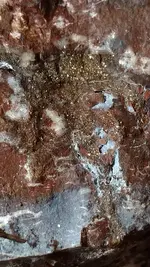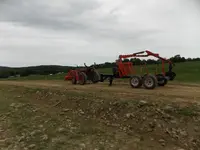When I design a new implement, I kind of follow a process before I build.
I doodle some crude depictions out on paper.
Then I design the implement using Microsoft Excel. To get me some nice "graph paper", I set my columns to size two. This allows me to design the implement with each box representing 1 square inch. Using the drawing tools, I can draw just about anything I could with mechanical drawing tools.
Next, I do CAD. Do not be impressed; I am a sheep farmer so that means CARDBOARD Aided Design! (LOL). I can cut a nice scale model of my implement with cardboard, a razor and a hot glue gun and really work out some details. It is far less expensive doing that, then cutting part welds, and buying more steel.
Most of the time I do not do a mock up using 1/4" plywood and 1x3 strapping, but a person can if they want.
By the time I do cardboard models, I got most details hammered out and can get the steel from my local steel shop. I try to stay clear of machined parts, and try and do everything I can for myself. Keep It Simple!
To do that, just break down whatever you want to build, into stages. Everything looks complicated, until it is broken down. For instance, figure out what the device will have for a frame, then how it will oscillate, how the PTO of the tractor will do that without costly gear boxes and pulleys and gearing (as much as possible). The figure out the tilting aspect. Then the table itself, and finally the water...one by one, they are not hard to fabricate.
IF a person spends $600 on a project lets say, and it works, then they can go invest in off-the-shelf units that might be more robust. But if the unit does not work, then they are only out $600 instead of $4000. But the design/build to me, is part of the excitement, and not just digging in the dirt. Other people's experiences may differ.






